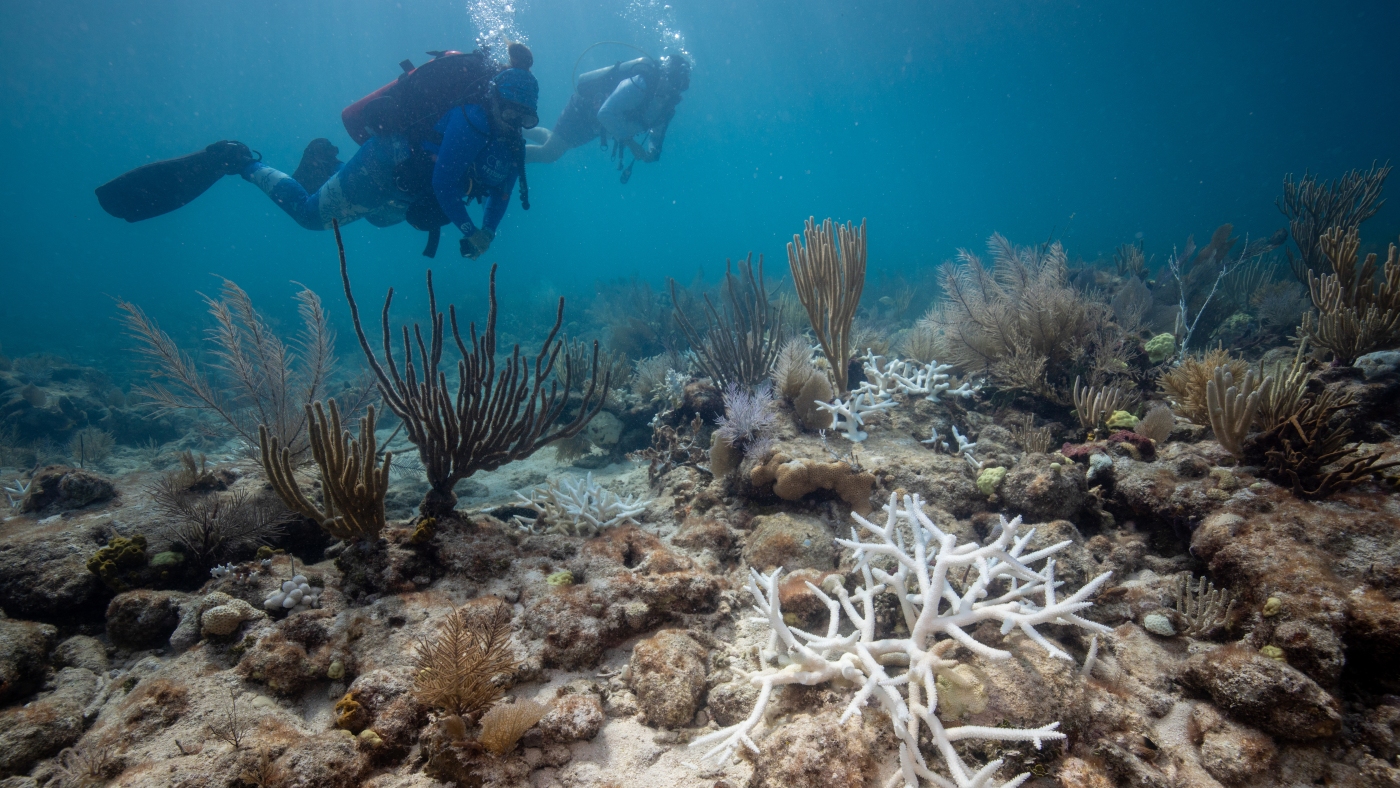Divers with the Coral Restoration Foundation swim over bleached staghorn outplants at Horseshoe Reef in the Florida Keys in August 3, 2023. A year after the worst bleaching event ever recorded, the coral reefs off the Florida coast are slowly recovering.
Image courtesy of/Coral Restoration Foundation
hide caption
toggle caption
Image courtesy of/Coral Restoration Foundation
MIAMI — A year after the worst bleaching event ever recorded, the coral reefs off the Florida coast are slowly recovering. Despite elevated ocean temperatures, scientists say this summer they didn’t see significant bleaching.

Corals expel their algae when the water is too hot for too long of a period. Last summer, record ocean temperatures fueled by an El Niño climate pattern sparked a global coral bleaching event. In the Florida Keys, there was widespread bleaching and many corals died, decimating reefs.
Because of storms and many days with a significant cloud cover, water temperatures in Florida over the last several weeks were well under what was seen last year. Phanor Montoya-Maya with the Coral Restoration Foundation says, “We’re better than last year but still in an alert level.”
Montoya-Maya says there was some bleaching on coral reefs in the Florida Keys this summer, but at levels normally seen. “Bleaching will happen every summer until September or October,” he says. “But, nothing out of what is expected…in natural summer conditions.”

A partially bleached staghorn coral that was planted by scientists is visible, Aug. 4, 2023, on Paradise Reef, near Key Biscayne, Fla. Scientists from the University of Miami established a new restoration research site there to identify and better understand the heat tolerance of certain coral species during bleaching events.
Wilfredo Lee/AP
hide caption
toggle caption
Wilfredo Lee/AP
In August, he says Coral Restoration Foundation staff observed spawning in four coral colonies. Coral, which are animals, propagate by growing and also by sexual reproduction. Once a year, in a mass-synchronized event, corals release their eggs and sperm at the same time.
Montoya-Maya says, of the four colonies in offshore nurseries that spawned in August, the gametes of only one were determined to be viable. “Bleaching caused these species and these individuals to invest a lot of energy into surviving and not reproducing,” he says. With the return of more normal water temperatures, he expects next year, coral colonies in the nurseries will resume successful spawning.

The Coral Restoration Foundation is one of several groups that mounted a rescue operation last year to preserve genotypes of endangered coral species. Some have spawned in nurseries and will be replanted onto reefs later this year.
Montoya-Maya says colonies of elkhorn coral and some other species have grown so large in nurseries that they need to be cut back or replanted. He says, “We are confident that once temperatures start decreasing and we are out of the bleaching zone, we will resume out-planting.”

